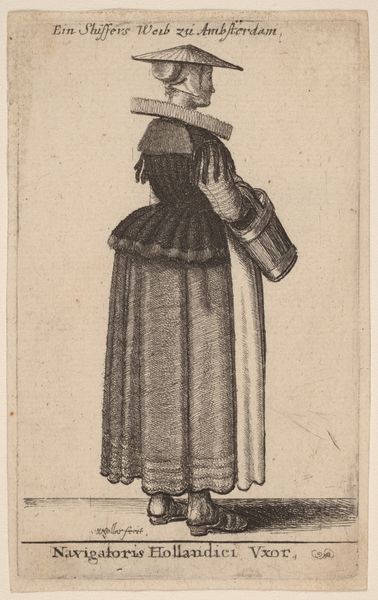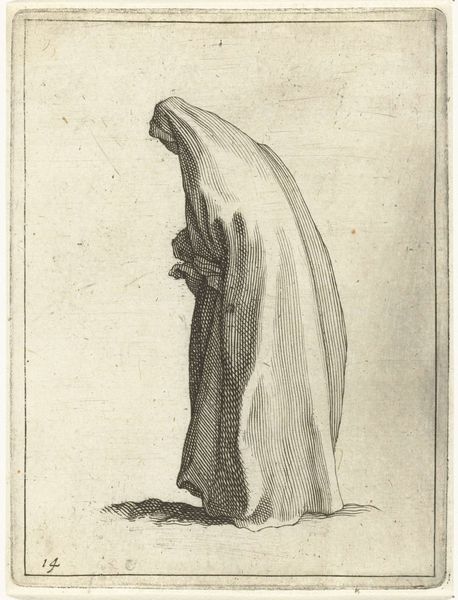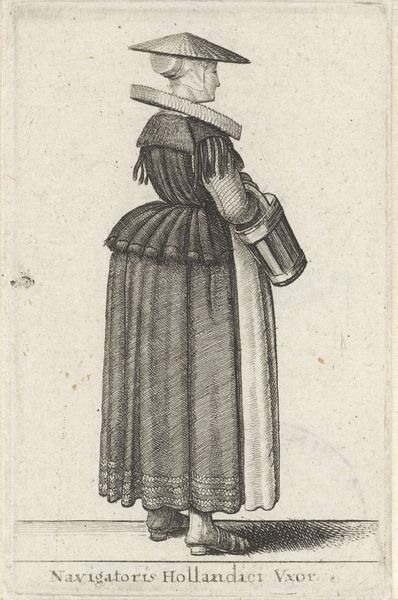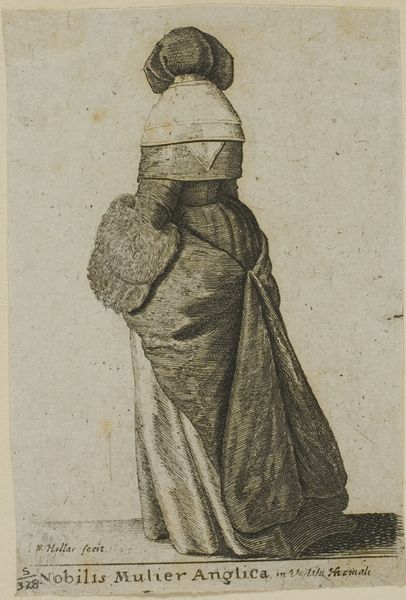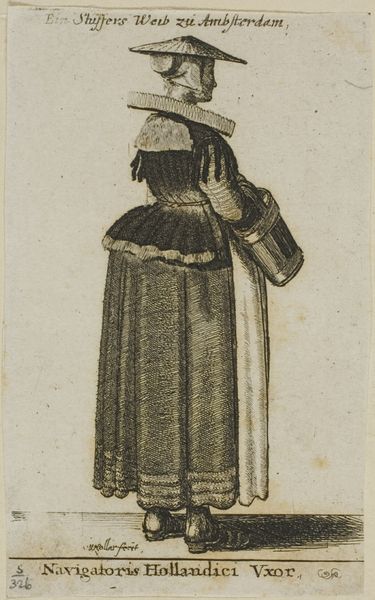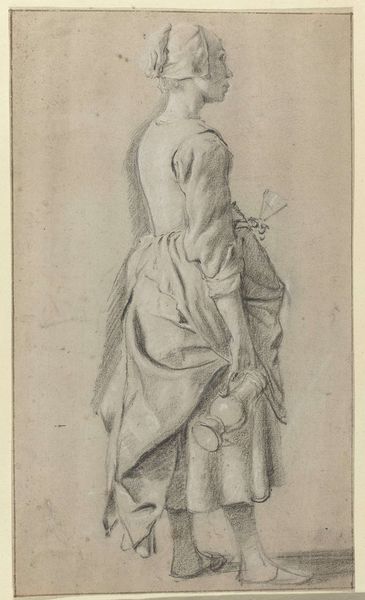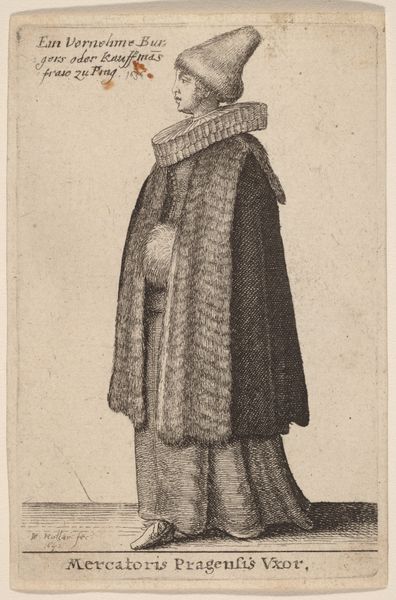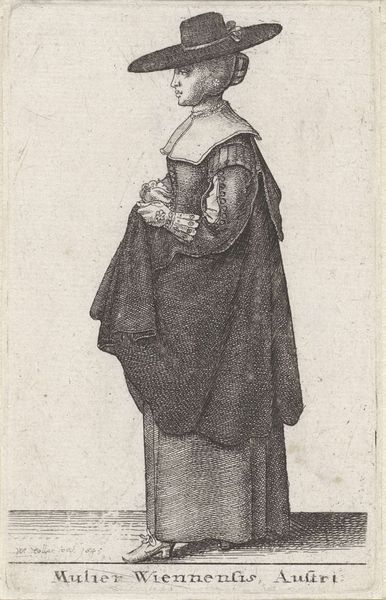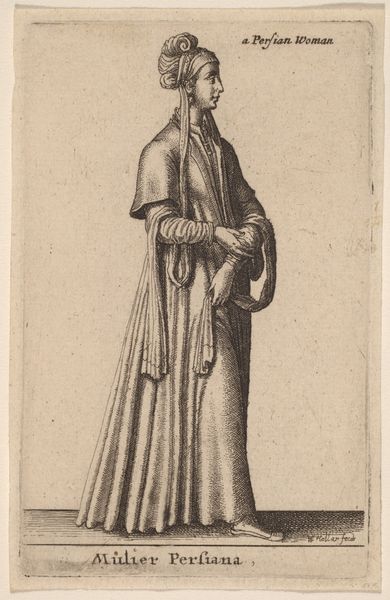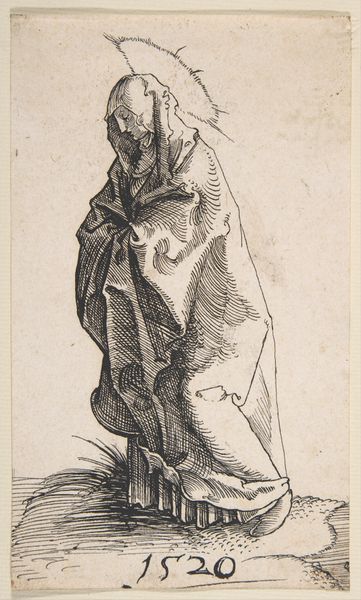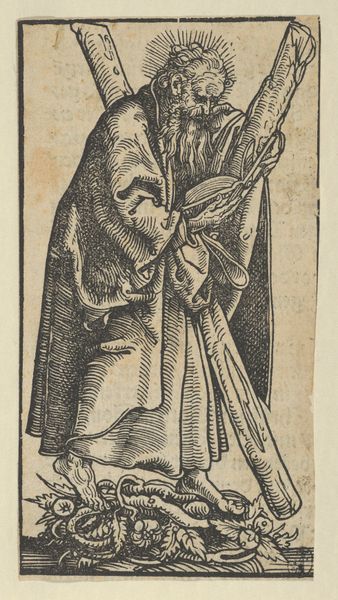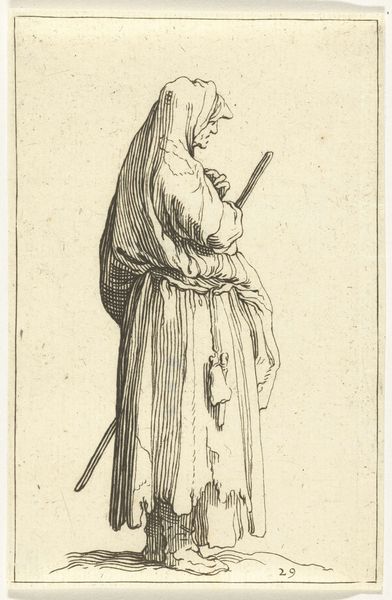
print, engraving
#
portrait
#
baroque
# print
#
figuration
#
engraving
Dimensions: height 94 mm, width 60 mm
Copyright: Rijks Museum: Open Domain
Editor: This is "Mulier Antverpiensis bonae qualitatis", an engraving by Wenceslaus Hollar from 1643. The detailed lines give her dress and fur muff such rich texture. It seems like it's a portrayal of wealth and status, but the woman’s face feels oddly detached. What do you see in this piece, beyond just a portrait? Curator: It's fascinating how Hollar uses the print medium to explore status in 17th-century Antwerp. The Latin title itself, which translates to "Woman of Antwerp of good quality," speaks volumes. The "good quality" isn’t just about her beauty; it signals her economic and social standing. Who do you think the target audience of this print may have been? Editor: Perhaps other wealthy people, as a status symbol or a reflection of themselves? Curator: Exactly, and possibly a wider audience too. Prints like this circulated as records of fashion and social identity. What strikes me is the implicit power dynamic—the male artist objectifying the female subject, reducing her to a signifier of her husband’s success, which was common then. How does the woman's posture play into this narrative, in your opinion? Editor: She's posed stiffly, almost like an object, which seems to support the idea that she’s a symbol more than an individual. It does feel a little dehumanizing. Curator: Precisely. It highlights how women were often confined to representational roles within a patriarchal structure. Examining her clothing as a form of visual rhetoric becomes essential. This portrait inadvertently critiques that objectification, allowing us to consider the lack of agency afforded to women of that era. Do you find that contemporary artists today are in conversation with images such as this one? Editor: Definitely! Contemporary artists are constantly re-appropriating and challenging these historical portrayals, reclaiming narratives and giving voice to those previously silenced. It definitely puts this work into a broader perspective. Curator: Absolutely, seeing art through an activist lens brings the past into conversation with the present. It's about acknowledging these historical inequalities and using them as a catalyst for social change.
Comments
No comments
Be the first to comment and join the conversation on the ultimate creative platform.

